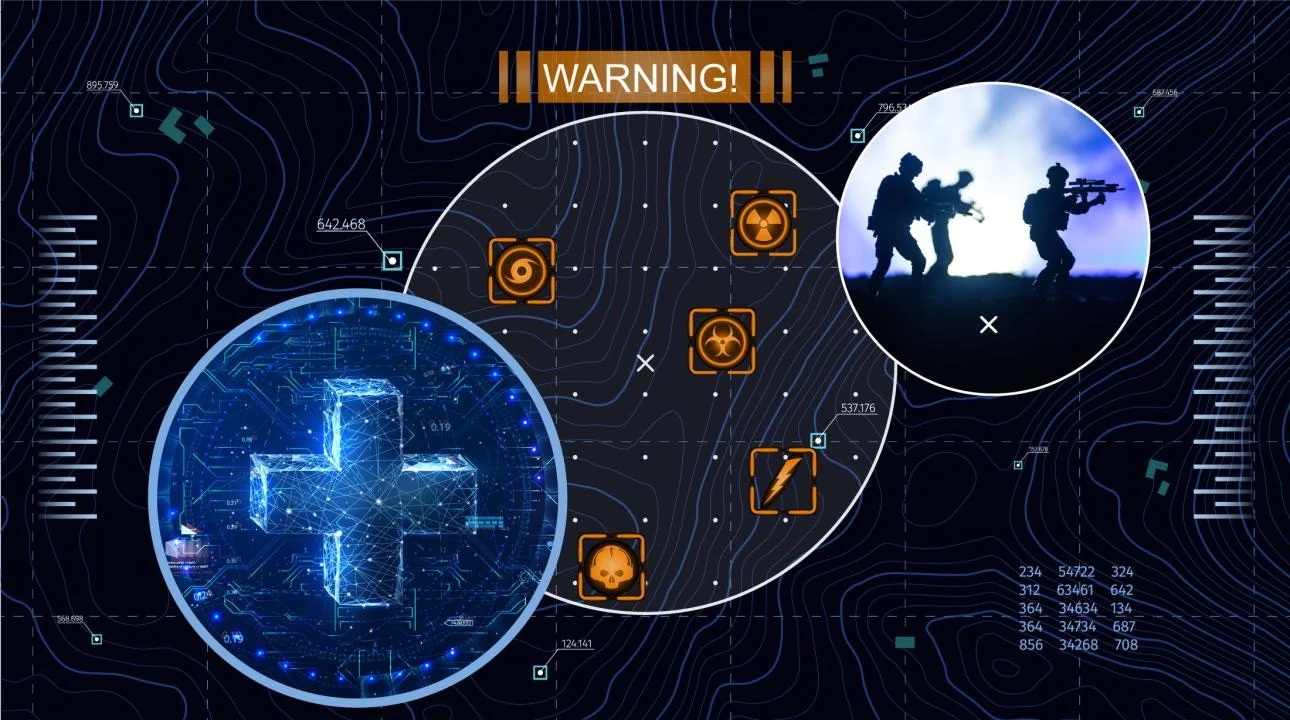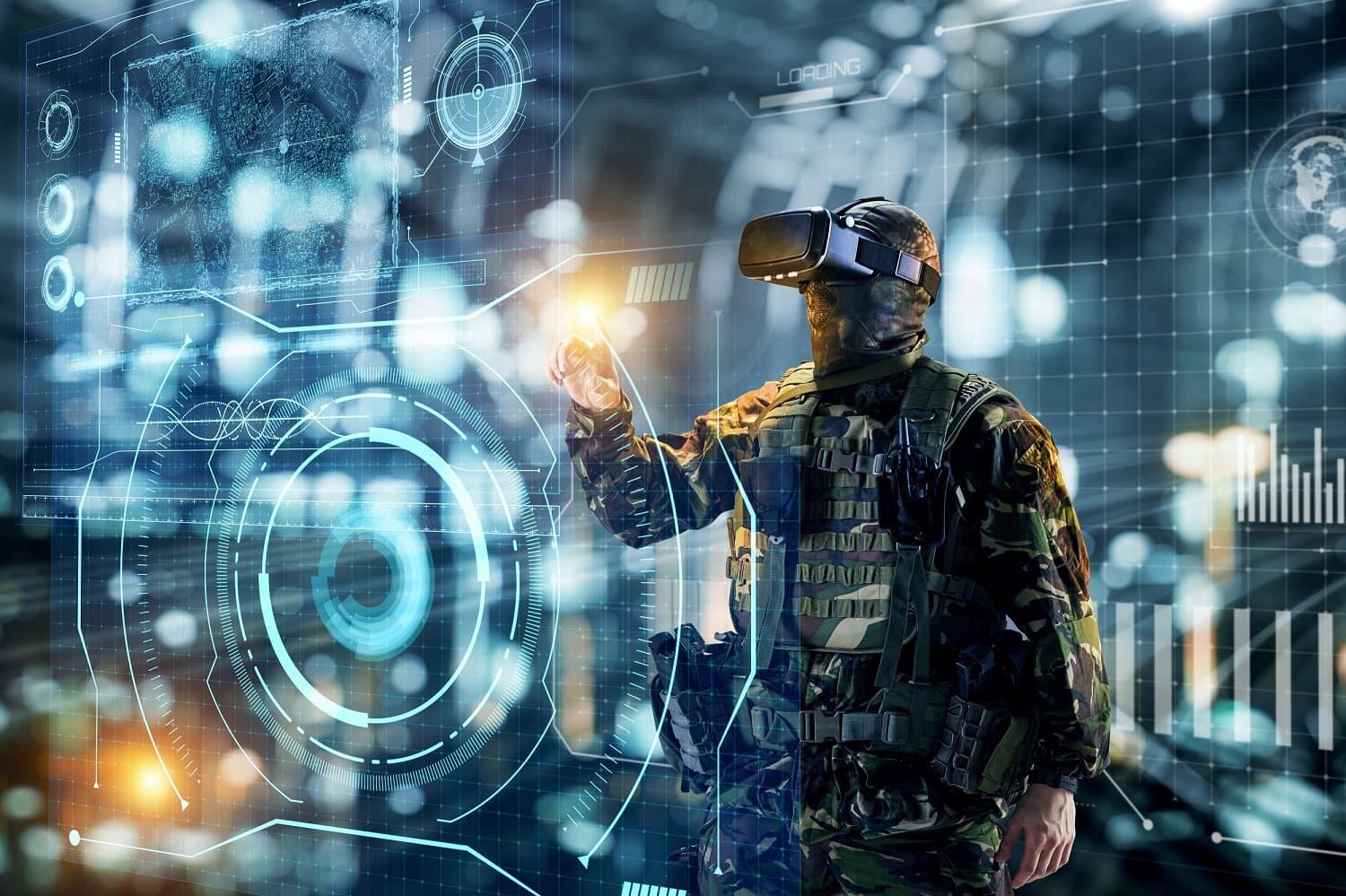
LMI’s Clark Spencer Talks Joint Health Risk Management (JHRM) for Defense Health
Clark Spencer Health, Data & Analytics, Digital Solutions, DefenseCould you tell us a little bit about your role here at LMI and some of the projects you are involved in?
As a vice president, digital solutions in LMI’s Digital and Analytic Services, I lead teams that are focused on delivering platforms that integrate hardware, software, data, and analytics to solve long-standing issues facing civilian and defense agencies. For example, we’re currently developing a Joint Health Risk Management (JHRM—pronounced “Jay Harm”) system for the Defense Health Agency and Joint Program Executive Office for Chemical, Biological, Radiological, and Nuclear Defense (JPEO CBRND). This novel solution ingests data from a variety of sources including weather, geo-terrain, and fixed and wearable sensors to detect potential CBRN threats. Using Artificial Intelligence and Machine Learning (AI/ML), we can make predictions about health consequences for the warfighter and deployed civilian personnel before they occur. These types of insights are the holy grail of health risk management and can only be realized by combining advanced Internet of Things (IoT) and sensor technology with expertly trained AI operating at the edge.
Using artificial intelligence and machine learning (AI/ML), we can make predictions about health consequences for the warfighter and deployed civilian personnel before they occur.

Tell us more about the JHRM program and why it’s important to the military community.
The end goal is to protect our men and women in uniform—and those that support them—whether stationed at home, abroad, or deployed in combat. Recent events in Eastern Europe only amplify this need, especially given that our near peer adversaries are prone to using non-conventional tactics that can be lethal but can also have long-term health consequences that surface years later in surviving service members. That’s a real problem, especially when we don’t know the entire exposure scenario—what someone was exposed to, at what concentration, by what pathway, and for how long. The military, especially the Army, has been wrestling with this issue for decades, including going back to events such as the use of Agent Orange in Vietnam that had disastrous consequences for many military service members. In the past, exposures were estimated after an event or a detection occurred through conventional sampling, but there are several limitations to this approach. First, without early warning, it’s often too late to prevent adverse outcomes. Also, after the fact, it can be very difficult to know an individual’s precise location at the time to determine duration and concentration of exposure. In environmental health, these are the critical data. Anything less makes health risk assessment mere guesswork. This is exactly why the Veteran’s Administration (VA) struggles with disability claims related to illnesses resulting from CBRN exposures; the supporting evidence of a causal relationship just doesn’t exist anywhere in the record. A very public and recent example is exposure to burn pits in Afghanistan and Iraq, where soldiers are being diagnosed with respiratory illnesses and rare forms of cancer years after returning home.
How does JHRM help address the challenge with disability claims?
The best remedy for any illness is to prevent it from happening in the first place, either by removing the hazard or removing the individual, but that’s not often practical in a military setting. By equipping soldiers with non-obtrusive wearable sensors, we can continuously monitor location, environmental and physical conditions, and individual physiology to make predictions about health risk. This allows a three-pronged attack on the problem.
First, continuous monitoring can serve as an early warning and help avoid exposures where practical. The medical costs avoided by eliminating or mitigating hazards can be astronomical. We know this through our work with the Army’s Health Hazard Assessment Program, where we helped develop the Army’s Medical Cost Avoidance Model (MCAM).
Second, where exposures are at non-critical levels for acute illness, the combination of continuous monitoring and AI can alert to the potential of cumulative effects of low-level exposure and account for possible synergistic outcomes. For example, the same concentration of exposure can have very different outcomes depending on an individual’s level of exertion. Faster breathing results in higher exposure of airborne contaminants, causing an individual to reach an exposure threshold much sooner. Likewise, a combination of certain compounds at low levels can result in an adverse outcome when exposure to just one of the compounds alone would not result in harm.
Third, a longitudinal record is made possible by recording and storing an individual’s lifetime exposure. Placing this data in a soldier’s permanent military health record will provide physicians with insight into the individual’s history, allowing for more accurate diagnoses as well as identification of potential root causes of illness. This is how JHRM can help with future disability claims. If this data were available today for those potentially exposed to burn pits, the VA would have most of the information needed to appropriately adjudicate the growing number of disability claims related to these exposures.
How does what you are doing with JHRM fit into LMI’s future technical direction?
LMI is very interested in advancing the practical use of IoT technologies across government and is investing in embedded AI/ML solutions for remote processing and decision support at the edge. This past year, we partnered with multiple universities, including the University of Virginia’s Link Labs, to develop practical applications for edge computing on sensor platforms. For example, we are exploring the use of machine learning to consolidate and evaluate data coming off multiple sensors to make novel predictions that were never the primary intent of any individual deployed sensor. We are also pushing to ensure multiple sensor deployment models are optimized from an edge compute and cybersecurity standpoint. By combining this knowledge with synthetic data and modeling, we continue to challenge existing concepts of operations to harness the disruptive power of IoT, sensor, and algorithm deployments. We recognize this as a significant growth area for LMI and a primary target for continued investment in research and development.
LMI is very interested in advancing the practical use of IoT technologies across government and is investing in embedded AI/ML solutions for remote processing and decision support at the edge.
What do you see for the future of the JHRM program?
JHRM will continue to evolve to leverage the latest in wearable sensor technology and take full advantage of computing at the edge with advanced AI/ML modeling that will drastically reduce time to insight and provide real-time risk management in the deployed environment. JPEO-CBRND developed JHRM as an open ecosystem to encourage innovation across the Services. As JHRM transitions to a Program of Record in the coming year and is made accessible to programs across DoD, it is envisioned to become the preferred platform for military environmental health risk management. By leveraging the full potential of JHRM, the military health community can greatly reduce exposures to environmental health hazards, improve mission success, and ultimately protect the health of our men and women in uniform both now and in the future.


Clark Spencer
Vice President, Digital SolutionsClark Spencer is vice president, digital solutions at LMI where he serves as an advisor to the Department of Defense’s Joint Health Risk Management Program (JHRM), as well as leads the United States Postal Service environmental, energy, and sustainability programs.


